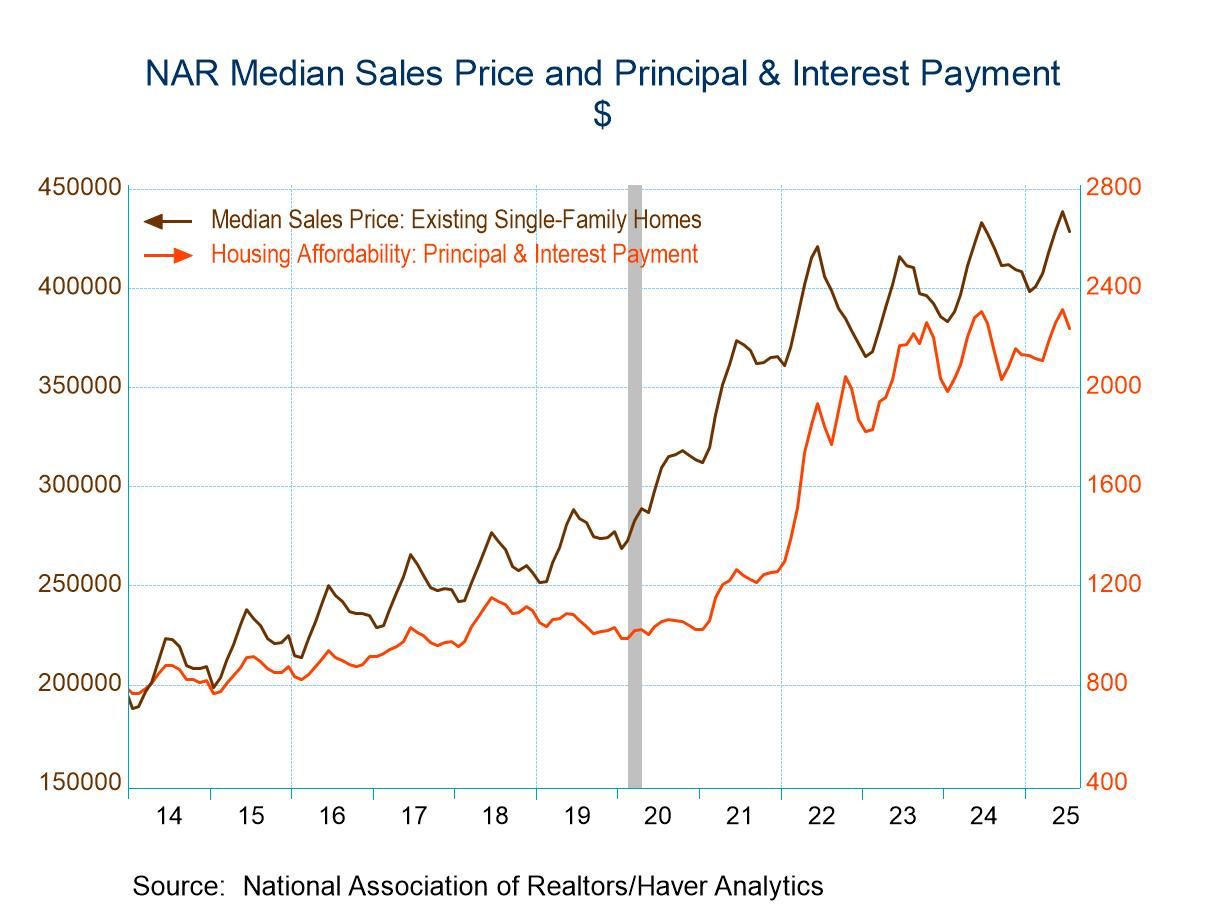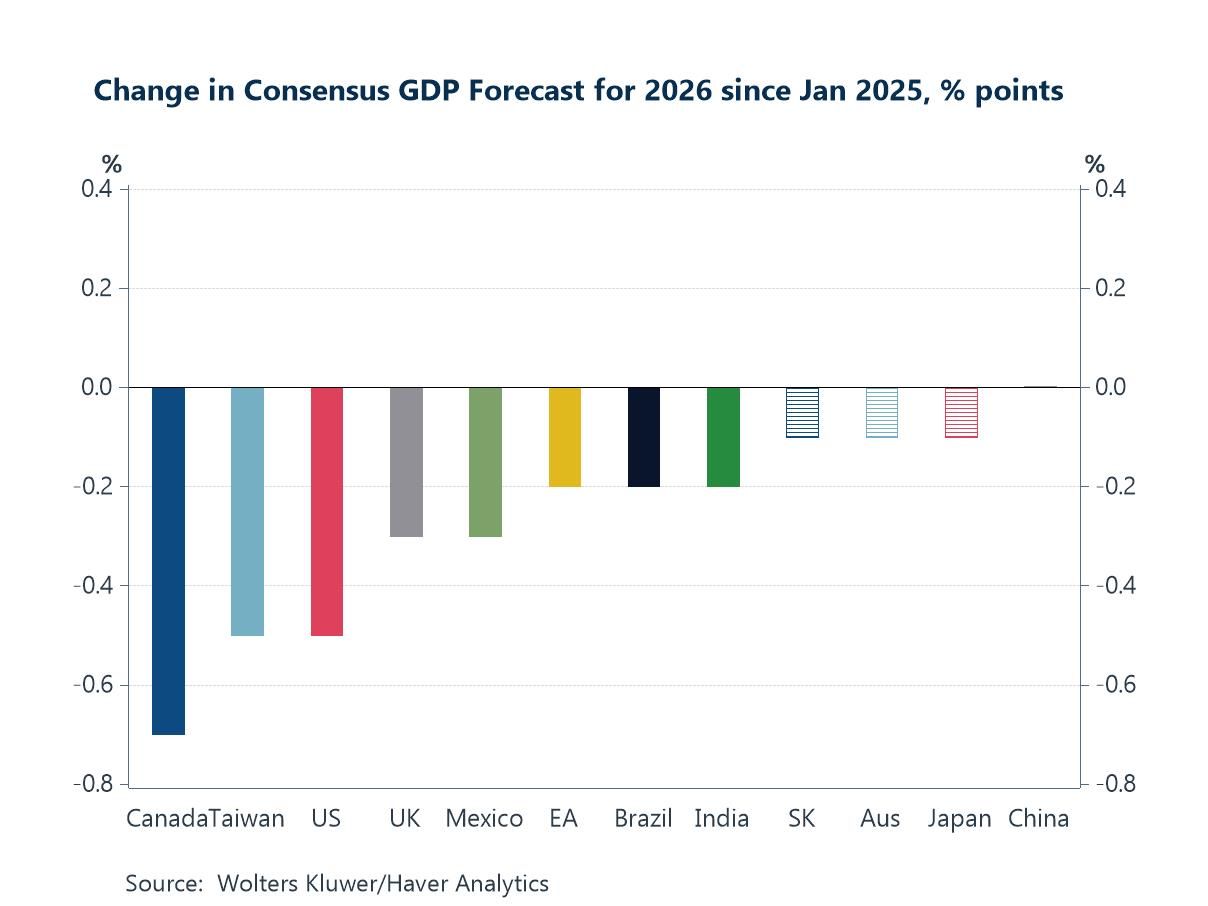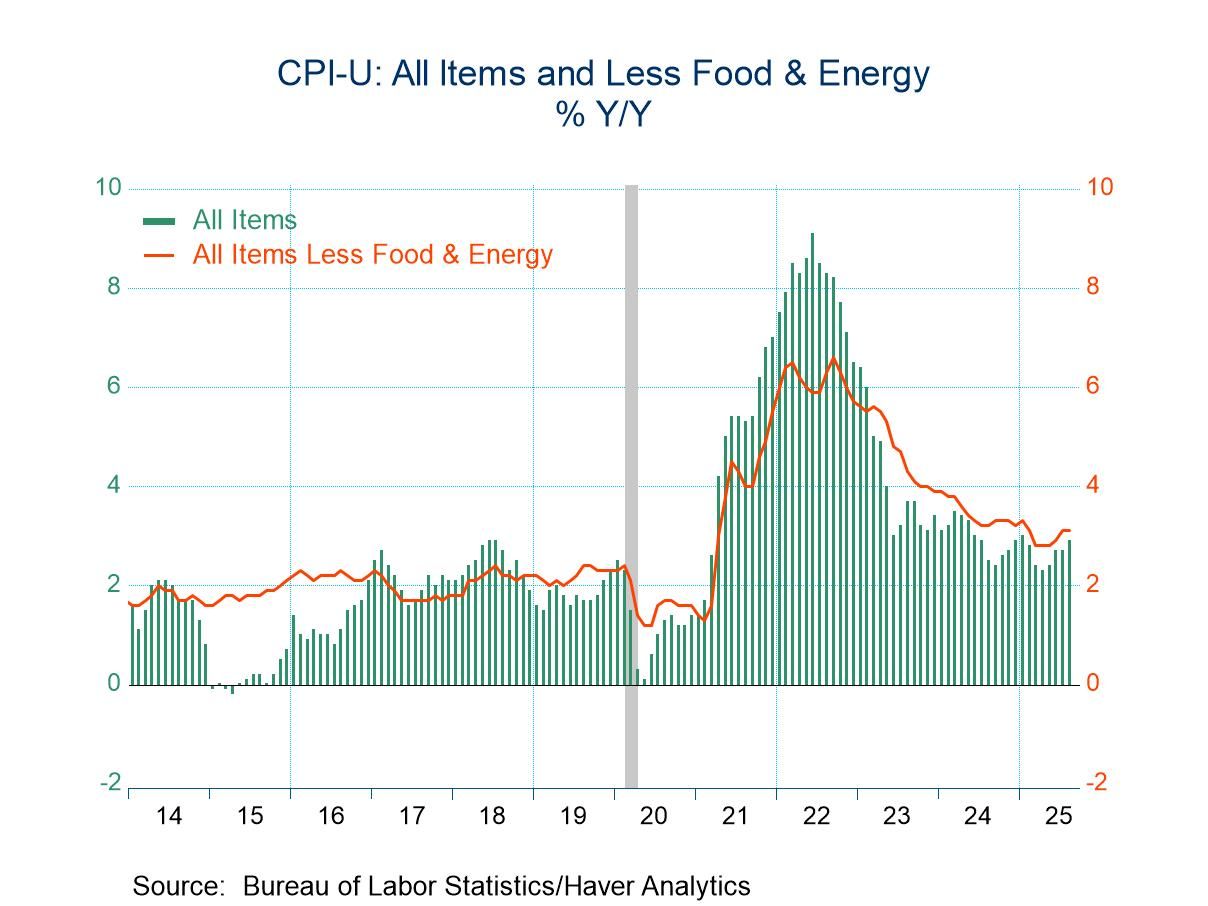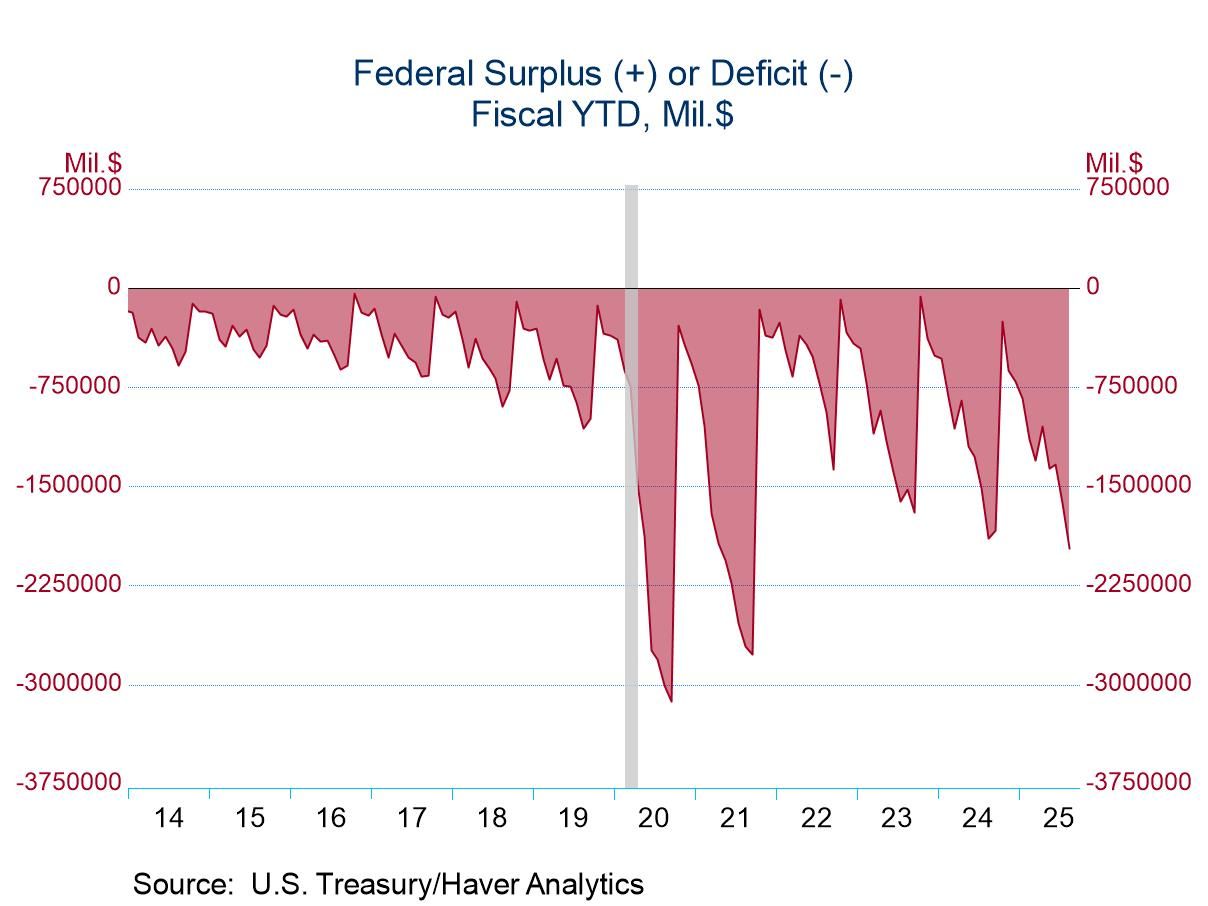 Global| Apr 16 2009
Global| Apr 16 2009Philadelphia Fed Index Indicates Further Economic Contraction; Rate of Decline Diminishing While Expectations Up Sharply
by:Tom Moeller
|in:Economy in Brief
Summary
The Philadelphia Federal Reserve Bank indicated that economic activity in the region continued to contract during April. The Index of General Business conditions in the manufacturing sector came in at -24.4 versus a reading of -35.0 [...]
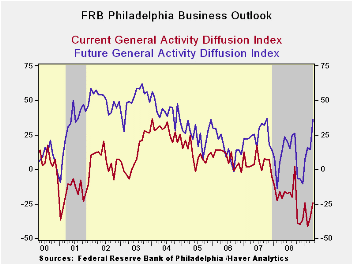
The Philadelphia Federal Reserve Bank indicated that economic activity in the region continued to contract during April. The Index of General Business conditions in the manufacturing sector came in at -24.4 versus a reading of -35.0 last month and a low of -41.3 in February. The latest beat expectations for a reading of -32
Though the latest figure remained negative it may indicate that the decline in economic activity is moderating. During the last ten years there has been a 70% correlation between the level of the Philadelphia Fed Business Conditions Index and the three-month growth in factory sector industrial production. There has been a 64% correlation with q/q growth in real GDP.
The Philadelphia Fed constructs a diffusion index for total business activity and each of the sub-indexes. The business conditions index reflects a separate survey question.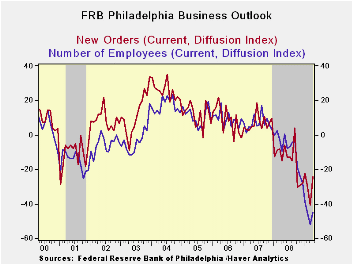
Amongst the sub-indexes the new orders component improved to the highest level since January as 19.8% of respondents reported higher orders. That was double the March low. The index of unfilled orders also rose to its highest since last September. Still under pressure, however, was the employment index which improved just slightly from the March record low. Forty-five percent of respondents expected to reduce employment levels, while only 0.2% expected to raise them. During the last ten years there has been a 79% correlation between the index level and the m/m change in manufacturing sector payrolls.
The prices paid index at -31.5 was near the record low. Five percent of respondents planned to raise prices while thirty six percent expected to lower them. During the last ten years there has been a 73% correlation between the prices paid index and the three-month growth in the intermediate goods PPI. There has been an 82% correlation with the change in core intermediate goods prices.
The separate index of expected business conditions in six months improved its highest level since late 2007. The expectations index for new orders and shipments surged but expectations index for employment improved just moderately.
The figures from the Philadelphia Federal Reserve can be found in Haver's SURVEYS database.
The latest Business Outlook Survey from the Federal Reserve Bank of Philadelphia can be found here.
| Philadelphia Fed (%) | April | March | April '08 | 2008 | 2007 | 2006 |
|---|---|---|---|---|---|---|
| General Activity Index | -24.4 | -35.0 | -21.1 | -21.3 | 5.0 | 8.0 |
| Prices Paid Index | -31.5 | -31.3 | 53.8 | 36.4 | 26.3 | 36.7 |
Tom Moeller
AuthorMore in Author Profile »Prior to joining Haver Analytics in 2000, Mr. Moeller worked as the Economist at Chancellor Capital Management from 1985 to 1999. There, he developed comprehensive economic forecasts and interpreted economic data for equity and fixed income portfolio managers. Also at Chancellor, Mr. Moeller worked as an equity analyst and was responsible for researching and rating companies in the economically sensitive automobile and housing industries for investment in Chancellor’s equity portfolio. Prior to joining Chancellor, Mr. Moeller was an Economist at Citibank from 1979 to 1984. He also analyzed pricing behavior in the metals industry for the Council on Wage and Price Stability in Washington, D.C. In 1999, Mr. Moeller received the award for most accurate forecast from the Forecasters' Club of New York. From 1990 to 1992 he was President of the New York Association for Business Economists. Mr. Moeller earned an M.B.A. in Finance from Fordham University, where he graduated in 1987. He holds a Bachelor of Arts in Economics from George Washington University.



